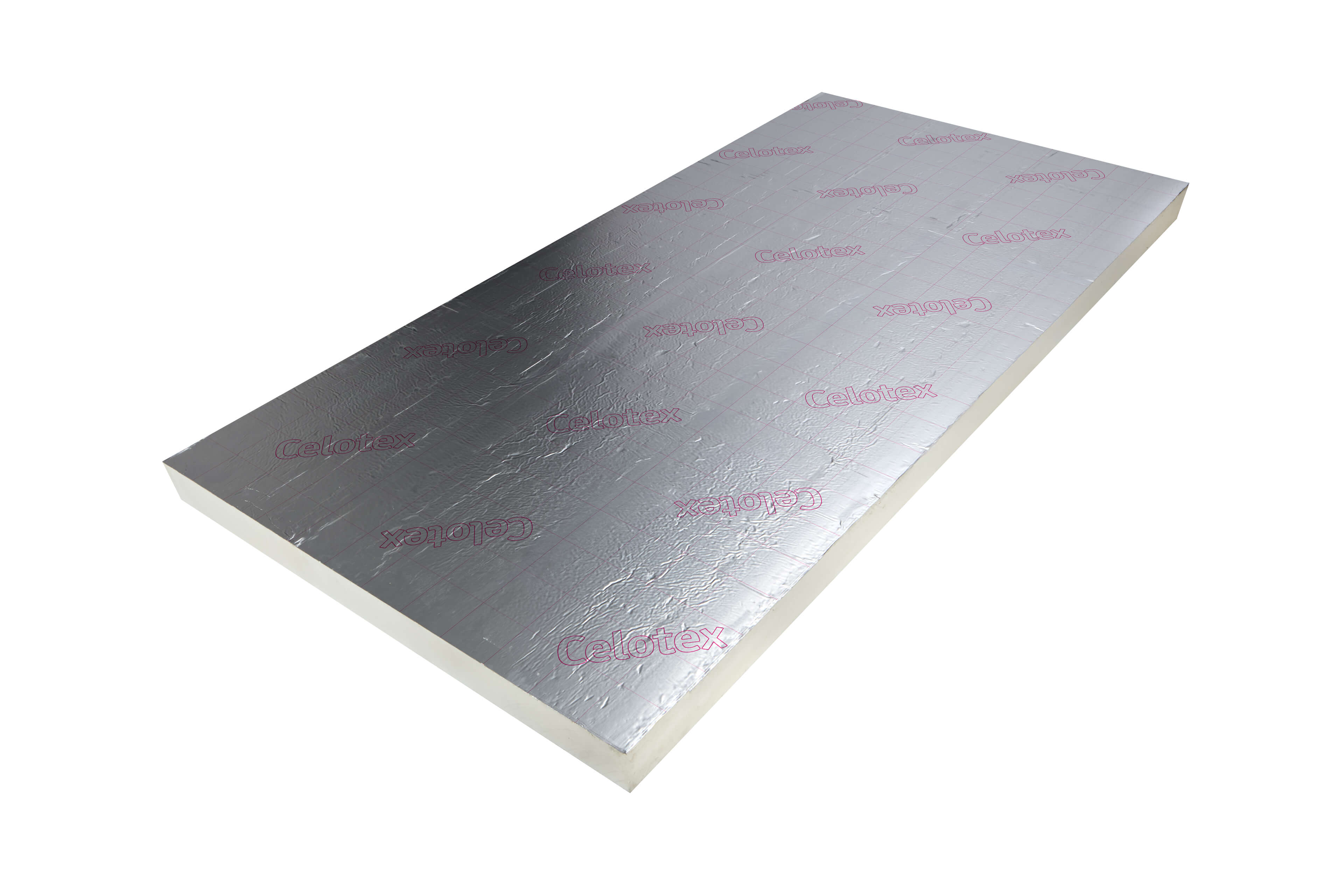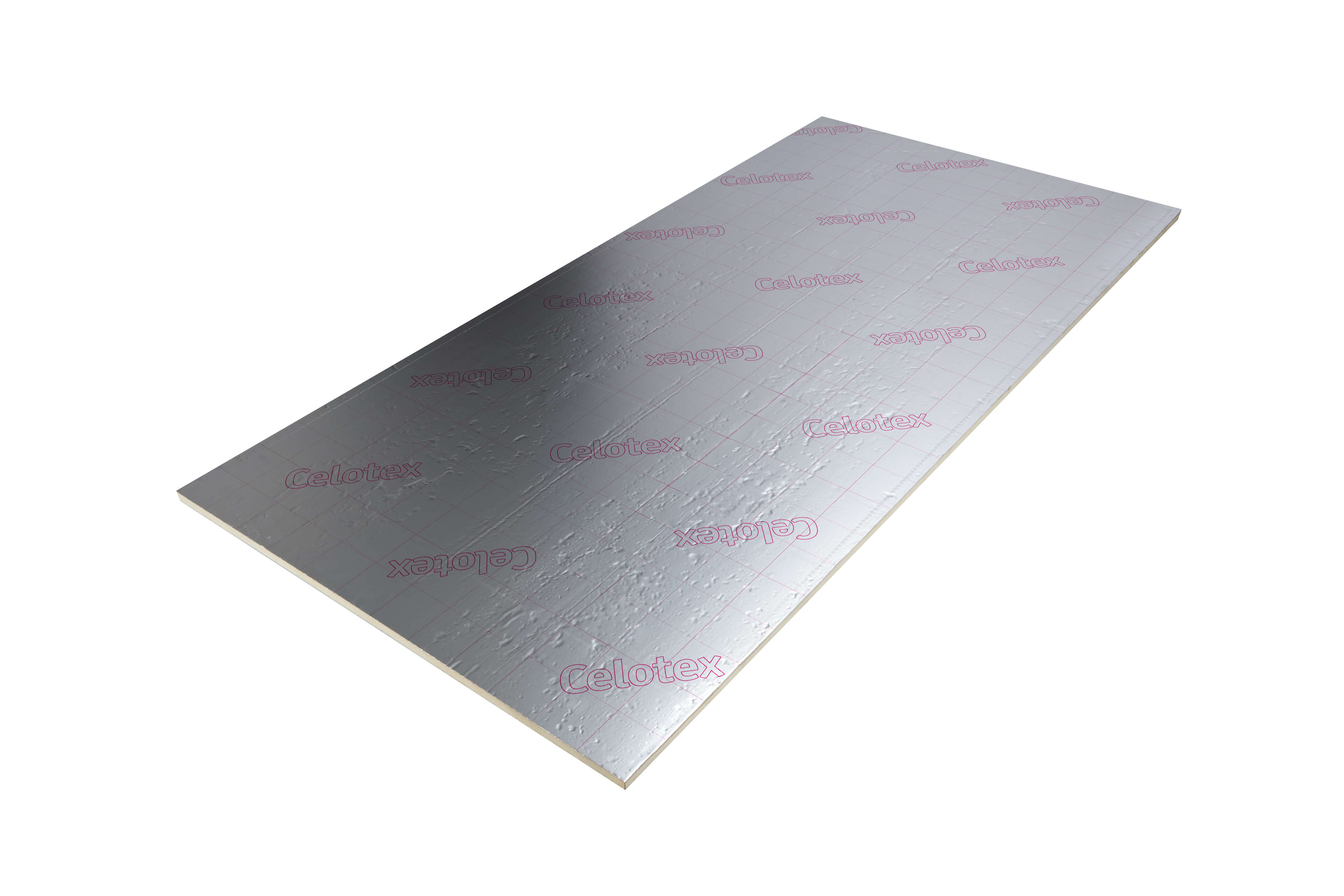Wall Insulation Board
(33 Products)Wall insulation boards are rigid panels formed from high-performance insulating cores such as expanded polystyrene (EPS), extruded polystyrene (XPS), polyisocyanurate (PIR), phenolic foam, and mineral wool.
Fixed as a continuous layer inside, within, or outside a wall, they create an unbroken thermal barrier that blocks heat loss through studs and masonry (thermal bridging), while certain facings (foil, tissue, or fleece) can also act as part of an air-or vapour-control strategy when fully taped and sealed.
What is Wall Insulation Board?
Wall insulation board is a high-performance thermal shield that transforms a wall assembly into a continuous envelope, significantly reducing heat loss.
Depending on the core material, it can also offer enhanced moisture resistance, contribute to the rigidity of the wall system, and provide varying levels of fire resistance.
The walls of a building are a significant source of heat transfer, accounting for a substantial portion of heat loss in uninsulated or poorly insulated properties. This heat loss leads to higher heating bills and also contributes to uncomfortable drafts, cold spots, and an increased carbon footprint.
Wall insulation boards are engineered to combat these issues by creating a thermal barrier that slows down the rate at which heat escapes during colder months and prevents excessive heat gain during warmer periods.
Applications
Wall insulation boards are generally installed:
- Between Leaves - E.g. partial-fill phenolic slabs clipped into a masonry cavity.
- Inside The Frame - A foil-faced PIR layer installed within or against the frame, often serving as the primary vapour control layer on the warm side. (If boards are friction‑fitted between studs they must be cut perfectly tight; more commonly, a rigid board is placed across the studs to eliminate gaps.)
- Outside - An external wall insulation (EWI) system where EPS or mineral-wool boards are adhesively bonded and dowel-fixed to masonry then rendered. (Phenolic or PIR boards may be used only in render systems that achieve at least Euroclass B and are not permitted above 18m on UK buildings that require A2‑s1,d0 or better.)
All three rely on tight-butted joints taped or mastic-sealed to create an air barrier.
Cavity Wall Insulation
This is one of the most frequent uses. Cavity walls have two layers of masonry with a gap (cavity) between them. Cavity insulation boards are placed in this cavity to stop heat from moving across it.
- Installation: Boards are usually cut to fit the cavity and held in place with ties, making sure there's a continuous thermal barrier. Some boards are made specifically for partial-fill or full-fill cavities.
- Benefits: Very effective at preventing heat loss, keeping the cavity dry, and improving the overall U-value of the wall.
- Products: Kingspan Kooltherm K106, Kingspan Kooltherm K108, Celotex CW4000.
Internal Wall Insulation (Dry Lining)
For older properties with solid walls or where insulating the outside isn't possible, internal wall insulation is a good choice. Insulation boards are fixed to the inside surface of the external walls, often finished with plasterboard.
- Installation: Boards can be mechanically fixed, glued, or both. It’s vital to deal with potential cold spots around openings and to include a continuous vapour control layer if needed.
- Benefits: Improves thermal performance without changing the outside appearance, and can be less disruptive than external insulation for some properties.
- Things to Consider: Slightly reduces internal room space; requires careful detailing to prevent condensation.
- Products: Many PIR boards like Celotex GA4000 and XR4000, as well as Kingspan Kooltherm K112, can be used for internal wall applications, especially when a thin, high-performance board is needed.
External Wall Insulation (EWI)
EWI involves attaching insulation boards to the outside of a building’s walls, which are then covered with render or cladding. This method creates a continuous thermal envelope, eliminating cold bridges.
- Installation: Boards are mechanically fixed and/or glued to the existing wall, followed by a basecoat, a reinforcing mesh, and a final render or decorative finish. For rendered EWI, thermally‑broken telescopic tube fasteners with steel pins are preferred over simple screws and penny washers.
- Benefits: Excellent thermal performance, protects the existing building structure, improves the look, and can solve problems like dampness in older buildings.
- Things to Consider: Requires external scaffolding, can change a building’s outside appearance, and might need planning permission for historic buildings or those in conservation areas.
- Products: While not specifically marketed for EWI, some denser PIR and phenolic boards can be used where the facade system is tested to the appropriate fire class; stone‑wool (Euroclass A1) and EPS remain the default boards for most render‑based EWI systems. XPS is generally reserved for below‑ground or behind ventilated cladding due to its Euroclass F rating.
Timber Frame and Steel Frame Insulation
Insulation boards are widely used within the framework of timber and steel-framed buildings.
- Installation: Boards are cut to fit snugly between studs, ensuring a tight fit to minimise air leaks. They can be used as a sheathing board or as infill insulation.
- Benefits: Delivers excellent thermal performance for lightweight frame constructions.
- Products: Kingspan Kooltherm K112 are made specifically for framing uses.
Suitable Fixings
Mechanical fixing is critical: for EWI, use telescopic plastic sleeves with steel or composite pins; for internal linings or sheathing layers, stainless or coated‑steel screws with plastic or steel washers spread the load and prevent pull‑through.
Fire‑stops or cavity barriers must be introduced at floor lines when foams are used in ventilated facades.
On the interior, insulated plasterboard - 12.5mm gypsum bonded to 25-70 mm PIR or phenolic - offer a neat retrofit solution but need services chased or a thin service batten zone to avoid penetrating the vapour layer.
Frequently Asked Wall Insulation Board Questions
How to Fit Insulation Board to External Walls?
We discourage homeowners from insulating solid walls themselves. In most cases, homeowners employ professionals to install external solid wall insulation. This type of insulation can also change the outward appearance of your home, which may require planning permission.
The installation process is complicated and involves lots of different steps. Professionals have to undertake render tests, remove pipework, and protect windows before they can even think about installing external wall insulation.
When it comes to high-performance thermal materials, it pays to speak to the experts to ensure the work adheres to current building regulations.
When Should I Install Internal Wall Insulation?
Insulating interior walls is an excellent choice for solid wall homes where external insulation isn't feasible or allowed, such as listed structures, conservation areas, or any other situation where you want to maintain the appearance of a property.
At Materials Market, we stock Kingspan K118 Insulated Plasterboard - one of the thinnest available Internal Wall Insulation (IWI) - solutions. This plasterboard is ideal for use in buildings that can’t be insulated on the outside.
Internal wall insulation should be considered in the following applications:
- External walls that are insufficiently insulated
- External walls that are either in a state of disrepair or do not provide sufficient defence against the weather, resulting in dampness, draughts and heat loss
- Applications where external insulation would adversely affect building appearance
- Retrofit projects and existing buildings
What Is "Cold Bridging" And How Do Wall Insulation Boards Help To Prevent It?
Cold bridging (or thermal bridging) occurs when there's a break in the continuous insulation layer within a building's thermal envelope, allowing heat to escape or enter more easily through that point.
Common cold bridges include wall ties, steel lintels over windows, or uninsulated floor/wall junctions. Wall insulation boards help prevent cold bridging by creating a continuous, unbroken thermal layer.
In cavity walls, for instance, partial-fill boards leave an air gap to prevent moisture transfer, while full-fill options completely block the cavity. In external wall insulation (EWI) systems, the insulation wraps the entire exterior, effectively eliminating cold spots at junctions and structural elements.
Careful detailing around openings and junctions is vital to maintain this continuity.







.jpg)
.jpg)










